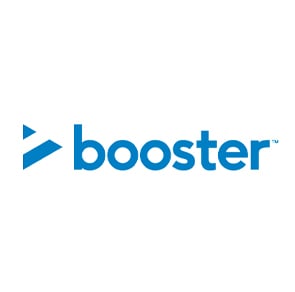The Booster Innovation Fund helps Kiwi’s invest in early-stage companies founded on cutting edge innovations being developed right here in New Zealand.
We chatted with Woolchemy CEO & Founder, Derelee Potroz-Smith about how motherhood brought on a scientific breakthrough that is transforming wool into sustainable hygiene products and how Booster’s Innovation Fund is helping.

A one-on-one Q&A with one of the exciting new world Kiwi tech businesses that has received investment from our Booster Innovation Fund (BIF) portfolio, creating solutions for global issues. Babies. They’re adorable, but also kind of notorious for making messes.
Which explains why the arrival of Woolchemy CEO & Founder, Derelee Potroz-Smith’s second baby not-so-coincidentally coincided with an eco-anxiety attack, brought on by the waste generated from her two children under 19 months.
“Sadly, 300,000 nappies are thrown away every minute around the world and with each nappy containing the equivalent of one cup of crude oil in synthetic materials, the waste and associated microplastics is a massive environmental and health problem,” says Derelee.
This led Wellington mother and daughter duo, Angela Potroz – a wool grower – and Derelee, an engineer, to take a note from nature to help reduce the use of single-use personal products.
Establishing Woolchemy in 2008, Derelee and Angela, combined one of the world’s oldest natural, renewable fibres – wool – with scientific alchemy to create one of the first high performing, superabsorbent, sustainable, and biodegradable material to be used in personal hygiene products.
Good for babies – and best of all, the planet they’ll be growing up in!
So, your (justified!) eco-anxiety attack was what spurred you on to establish Woolchemy – what made you turn to wool as one solution to reduce single-use personal hygiene products?
Derelee: Yes! With my mother’s knowledge as a wool grower, we knew that wool, by nature, has superpowers, perfect for healthcare products.
These include thermal regulating and moisture wicking properties. With wool’s innate odour control and absorbing abilities that neutralise the ammonia in urine to contain smells and avoid skin irritations, we believed these could not only be used to help babies sleep better, but knew it would benefit the environment.
In our view there are no other fibres – whether it be natural or synthetic that can deliver these benefits without adding additional chemicals.
Is Woolchemy a world leader in using wool in this way within the personal health industry?
Derelee: Yes, we believe Woolchemy is one of the first companies in the world to make wool non-woven materials for hygiene products.
We’re also one of the first to develop a superabsorbent wool substrate, using a patented eco-friendly process based on organic chemistry using an ingredient that is a by-product of another major agricultural process.
Engineers have described it as “beautiful chemistry”.
Wow, so New Zealand has been a source of this superpower sustainable material all this time, but Woolchemy is one of the first to harness it in the fight against single-use products!
Derelee: Sheep wool traditionally has only been used in durable products like carpets and upholstery, and these products use a lot of wool.
However, at Woolchemy, we follow an ethos that less goes a long way and one layer of wool (of paper weight proportions) can make a dramatic difference to the performance of your conventional disposable nappy. This means we can potentially make these products more effective, whilst reducing the quantity of plastic materials that go into these mass-produced single-use products.
We were personally driven to solve two major problems – increase the demand for wool, while also reducing the environmental burden of nappies that parents can't live without.
Tell us a bit about how you use wool in personal hygiene products – what is the technology behind it and what is it about wool that makes it better than current materials being used?
Derelee: We’ve developed two types of materials, one which is washable and reusable, called neweZorb. The other is designed for disposable hygiene products called neweFlex.
neweZorb is designed to absorb blood, urine, sweat, chemicals and water and so it can be applied to many applications, from washable menstrual underwear to hydroponic substrates. Wool usually only absorbs 30% of its weight in moisture, but neweZorb wool fabrics absorb over 1000%. One application we’ve used with neweZorb is cloth nappy inserts and the absorbent core of washable period products. We’ve also seen microgreens grow with superior yields and speed, using neweZorb because wool contains many nutrients and amino acids that support plant growth.
neweFlex was designed as a highly efficient moisture transport system in disposable nappies. Since wool is naturally effective at wicking away moisture and keeping the skin warm and dry even when wetness is present, it’s perfect for hygiene products that keep urine away from the body. Incredibly important if you want to avoid nappy rash and other skin irritations!
Have you been collaborating with any New Zealand wool industry groups to work alongside Woolchemy?
Derelee: Yes, absolutely! We owe our success to a collaborative, cross-disciplinary approach that blends scientific and commercial know-how.
This innovative approach was made possible by the unwavering support of various wool interests, including funding from the Ministry of Primary Industries (via the Sustainable Food and Fibre Futures Fund), the Agricultural and Marketing Research & Development Trust, and Beef & Lamb (via the Wool Levy Fund) and investors.
Additionally, research and development efforts from AgResearch, the University of Otago, and Callaghan Innovation have been instrumental in driving Woolchemy's progress forward.
Finally, the Wool Impact Group and the Campaign for Wool have played crucial roles in boosting awareness and support for Woolchemy's efforts in the New Zealand wool industry.
Do you have plans to move into any other areas of the personal health industry or other industries that may benefit from Woolchemy’s wool materials?
Derelee: The beauty of the materials we develop is that they’re very versatile, so they can be re-purposed for a myriad of end uses.
For personal care products that are made up of numerous layers, we are tackling one layer at a time where wool can make a difference. Equally, we have identified other industries where the same materials could be utilised from medical to agricultural.
What has been the biggest challenge or hurdle for Woolchemy?
Derelee: There are many misconceptions about wool and, more so, about strong wool, which has only ever been seen in durable and expensive carpets, rugs, acoustic panels and upholstery.
Then, along comes Woolchemy, wanting to use it in mass produced single-use products. Many are surprised to hear that synthetic fibres can now cost more than wool fibres, and that’s one indication of how we’ve undervalued one of our major natural renewable resources in New Zealand.
And therein lies a massive opportunity to positively impact our environment while lifting New Zealand’s economic returns in high value wool products.
What has been the response to Woolchemy’s bio tech, and who has been most responsive to it?
Derelee: Many countries facing significant waste and pollution challenges are taking steps to find ecological solutions and reduce their environmental impact. The European Union, for example, has identified the top ten ocean-polluting products, including sanitary products, through data collection efforts.
This information is driving new government legislation to protect the environment and influence policy changes in other trading countries. As a result, manufacturers and consumers are increasingly aware of the need to embrace fossil-free products that support circularity. This shift towards eco-friendly practices is crucial in creating a sustainable future for generations to come.
What do you consider Woolchemy’s biggest achievement to date? What are you most proud of?
Derelee: The day we convinced an international manufacturer to have the courage to process our wool fibre through their very expensive equipment was a day we’ll never forget.
Witnessing the first ever wool materials roll off the production line was an incredibly emotional and humbling moment for us all, despite being told by several technical experts that it wouldn’t work.
The manufacturer was amazed and excited for the opportunities ahead of us and we knew that New Zealand wool had a bright future.
What exciting things have you got planned next for Woolchemy?
Derelee: We have a bit of a list on the go!
We are implementing a manufacturing facility in New Zealand for our washable wool materials.
We are building on our international manufacturing facilities with new partnerships that will allow us to output millions of square metres of wool materials.
We are partnering with internationally renowned healthcare brands that will help to eliminate tens of thousands of tonnes of plastic from landfill and our oceans.
We are working with farming syndicates including Māori-owned farms to supply quality hygiene grade wool fibre to leading brands sharing the origin stories of our Aotearoa farmers with consumers.
How has Kiwi investment through Booster supported Woolchemy with its goals and growth? What sort of things has it allowed Woolchemy to do, as opposed to, say, having offshore investment?
Derelee: Being backed by a New Zealand fund, listed on the NZX, signals confidence to other investors and to the international brands we want to partner with. Funding has allowed us to attract the best expertise to hasten our product commercialisation.
New Zealand is a country full of bright sparks, so creating Kiwi-centric investment funds for Kiwi investors was a bit of a no-brainer for us.
We have multiple ways of investing in New Zealand – through the Booster KiwiSaver Scheme, or through one of our specialist investment funds like the Booster Innovation Fund
-
Read more about the Booster Innovation Fund (BIF) and some of the exciting companies it has invested in to advance early stage innovation – and see how you can support these trailblazing companies breaking the mould right here in Aotearoa.
Booster Investment Management Limited is the issuer of the Booster Innovation Scheme, Booster Innovation Fund (Fund). The Fund’s Product Disclosure Statements are available at www.booster.co.nz or by contacting your fina

